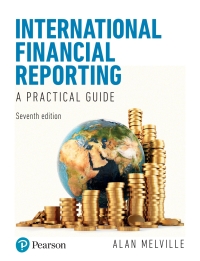Question
Homework #1: Cyclones Truck Corporation (Spring 2020) Cyclones Truck Corporation produces five different models of commercial trucks (models 1, 2, 3, 4, 5). Each truck
Homework #1:
Cyclones Truck Corporation (Spring 2020)
Cyclones Truck Corporation produces five different models of commercial trucks (models 1, 2, 3, 4, 5). Each truck is assembled by putting together an engine, tires, a frame, and a fuel tank. The company uses two types of engines (A, B), two kinds of tires (A, B), three frames (A, B, C), and two sizes fuel tank (A, B) for producing the trucks. The components used in each truck model are described in the table Vehicle specifications in the Excel template.
Each of the components listed above are purchased from the suppliers with which you have purchase contracts. Based on the contracts, these suppliers impose the minimum purchase quantity for each component, so that you must use at least that many. These suppliers also impose the maximum purchase quantity for each component because of the availability and production capacity of their facilities. These minimum and maximum supplies for each component are also shown in the table Raw Materials Supplies.
For the next production cycle, the company already has received some orders for each model, so that you must ensure you produce at least that many (minimum production). Based on the historical sales record, the companys marketing department asked you not to produce more than the certain amount for each model (maximum production). These minimum and maximum production units, as well as the per-vehicle profit, are again shown in the table Vehicle specifications.
There are two additional constraints that you must satisfy. First, tires A and B are produced by the same supplier and, because of the limited capacity of the suppliers equipment, this supplier requires that the combined supplies of tires A and B be at most 1200 units. Second, since Model 4s fuel consumption and CO2 emission are the highest among the five models, the management demands that the amount of Model 4 productions cannot be larger than that of Model 2, the greenest model.
Assume that the company can sell all the trucks they manufacture. The companys objective is to maximize its profit by finding the optimal number of production units for each model. Your task is to help the company management determine the optimal production schedule for the next production cycle by answering the questions below. Use the integer tolerance of 0 (zero) when solving the problem.
Questions.
- Formulate an LP model for this problem and answer the following. You must type your formulas, do not hand-write. Let Model 1 production units = X1, Model 2 production units = X2, and so on.
- Write the objective function
- Write the minimum and maximum production constraints for Model 1
- Write the constraint that the total Frame C usage for the production must not exceed 100.
- Write the constraint that the total Fuel Tank B usage must not be below 50.
- Write the constraint that the combined usage of tires A and B must be at most 1200.
- Write the integer constraints for all decision variables.
- Solve the problem by using the Spreadsheet (Excel) solver (analytic solver platform). Use the template provided. Show your answer in the spreadsheet.
- Answer the following question theoretically (without solving the model). If you change the integer tolerance from 0 to 0.1, how does your solution value change? Your options include the following (1) solution becomes better, (2) solution becomes worse, (3) solution cannot be better, (4) solution cannot be worse, and (5) solution will be unaffected.
- Answer the following question theoretically (without solving the model). Can the company make more profit by negotiating with supplier to increase the availability of Engine B? Why or why not?
- The company is considering eliminating the production of model 4 (least environmentally friendly model) to allocate more resources to production of other (greener) models. Can you make more profit by doing so? Re-solve the problem under this scenario. What is the new profit under this scenario? (Note: do not change anything in the Analytic Solver Platform; you only need to change some parameters in your spreadsheet before resolving the model.)
- Considering the two options discussed above (with and without limitation on model 4) give your recommendation to the company as to what they should do with production planning (which option should they choose). Discuss pros and cons of each option.

Step by Step Solution
There are 3 Steps involved in it
Step: 1

Get Instant Access to Expert-Tailored Solutions
See step-by-step solutions with expert insights and AI powered tools for academic success
Step: 2

Step: 3

Ace Your Homework with AI
Get the answers you need in no time with our AI-driven, step-by-step assistance
Get Started


